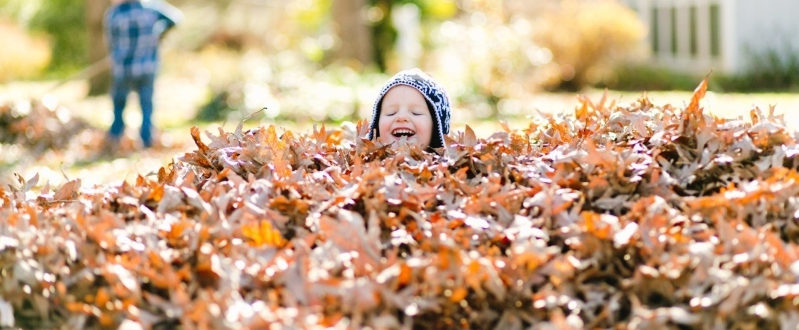Fall is beautiful when trees turn to brightly tinted hues, but those colorful leaves eventually tumble from treetops to litter your lawn. On the ground, leaves signal that it’s time to rake. Here’s a few tips to make this year’s leaf gathering easier.
When to rake or mow
It’s true, a few leaves won’t harm your lawn, but you need to remove them when they begin to pile up. Fallen leaves can smother turf, blocking sunlight from reaching grass blades and limiting air circulation, which can lead to turf diseases. The weight of leaves can actually prevent grass from growing properly. A leaf layer also keeps soil moist, which can cause turf roots to rot if the soil stays wet long enough. In short, ignoring leaves on your lawn isn’t an option – it could kill your grass.
So how do you know when it’s time to deal with fallen leaves? When you can’t see the top half of the grass blades or when they cover more than a third of your overall lawn, then you know it’s time to act. If a deep cold snap triggers leaf drop that happens quickly over a few days, you can wait until the lawn is nearly covered with a single leaf layer. Just don’t allow grass to remain obscured with fallen leaves for more than a few days.
Whether you opt to rake or mow over leaves, it’s always better to act before rain arrives and transforms dry leaves into a soaked, clumping mat. Wet leaves won’t chop well with a mower, and they tend to clog rakes and leaf vacuums.
Want to avoid raking?
It’s possible to skip raking completely by mowing over leaves and chopping them into small pieces. If you plan to compost leaves, chopping them first speeds up decomposition. Use a grass catcher to gather leaves as you mow over them.
You can also allow leaf pieces to decompose in place on the lawn – but you need to mow. To do this, chop leaves into dime-size pieces. Depending on how large leaves are and how deep the layer is, you may need to mow over them several times to chop them small enough. After mowing, you should see roughly 50 percent of the grass through the leaf pieces. The more grass you see, the more quickly those leaf pieces will decompose.
Microbes start the process of decomposition as the leaf bits settle onto soil between grass blades. They provide a nitrogen source, like that found in a winterizer or fall-timed lawn fertilizer and will help soil microbes break down leaves faster. Allowing leaves to decompose in place ultimately enhances the soil beneath your lawn, adding organic matter, which leads to a healthier, thicker lawn.
Keep in mind, thick, leathery leaves won’t decompose as well and should be gathered with a bagger attachment and added to a compost pile or used as mulch.
If you decide to gather leaves and set them out for community yard waste pickup, plan to reduce leaf volume – and the number of yard waste bags you need to use. Use a leaf vacuum with a shredder feature to chop leaves, or mow over them and use the grass catcher attachment on your mower to capture leaf bits.
Contact Us
"*" indicates required fields

